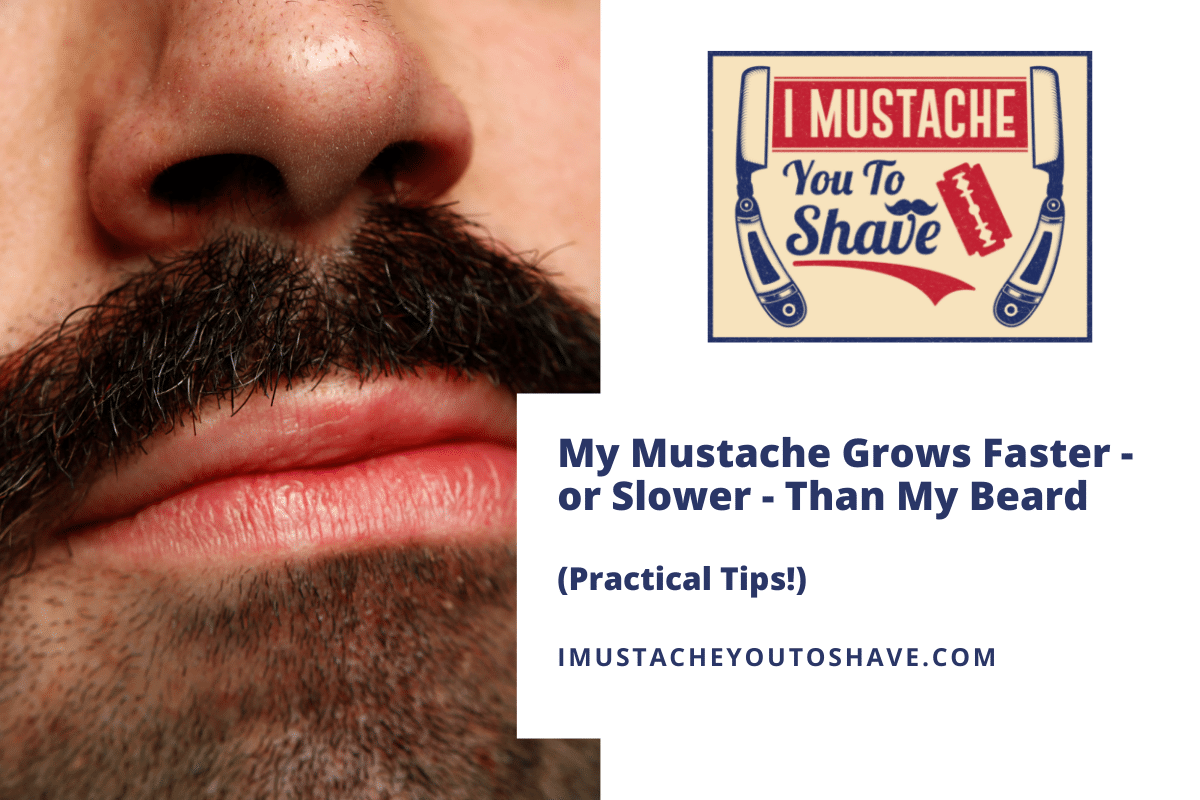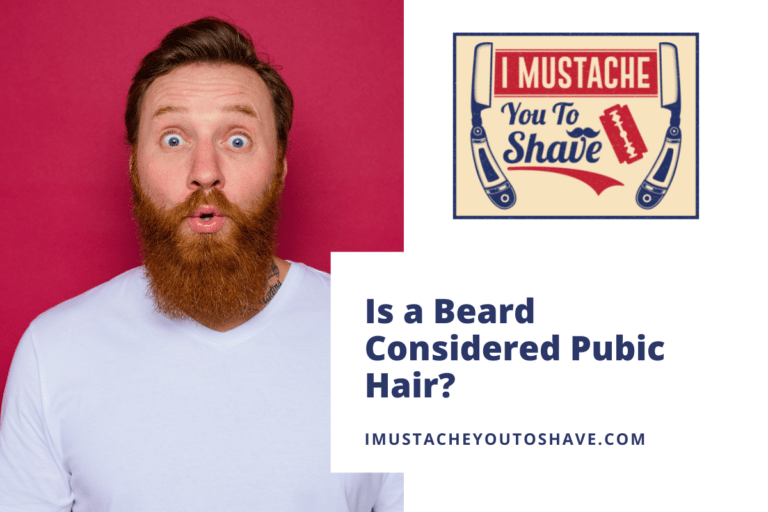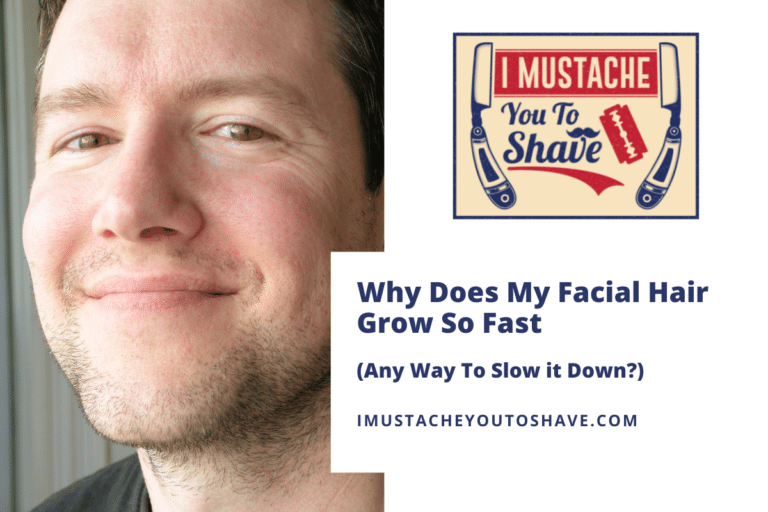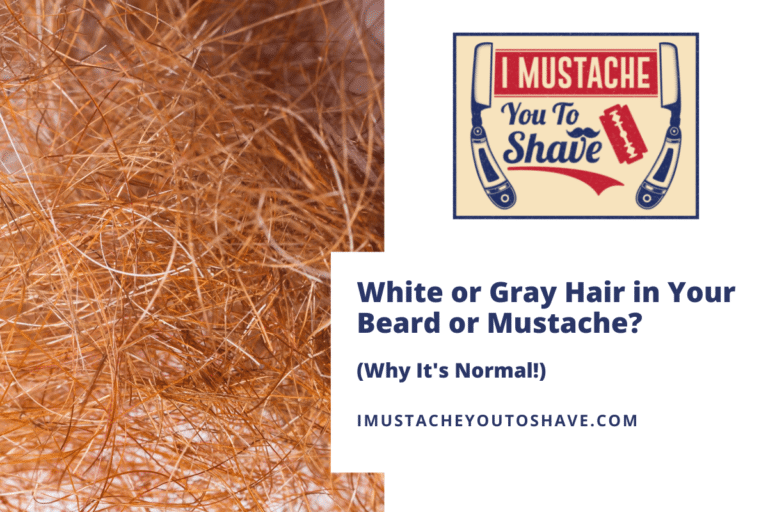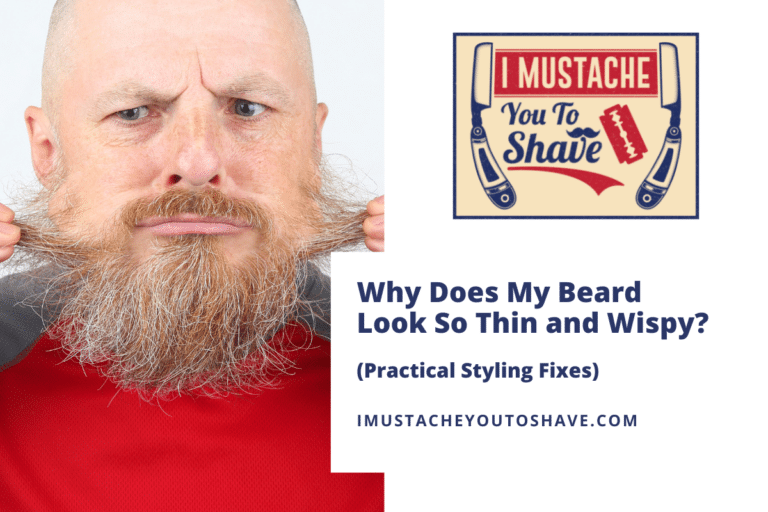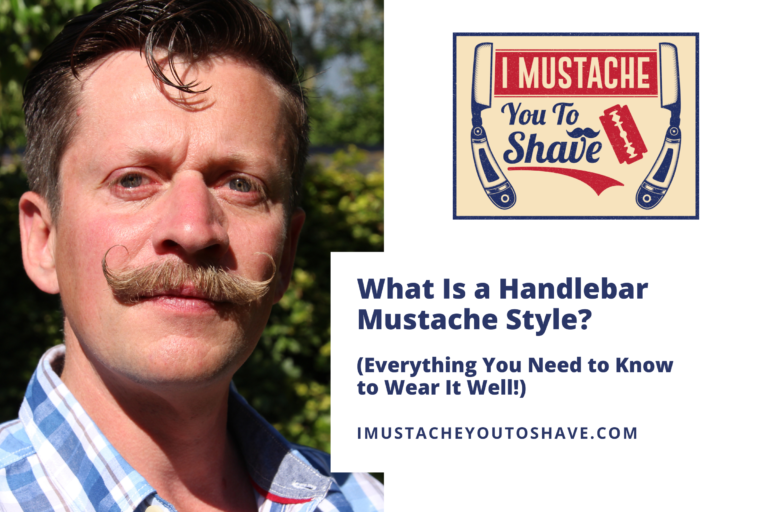My Mustache Grows Faster – or Slower – Than My Beard (Practical Tips!)
One of the most annoying truths when cultivating presentable facial hair is realizing that whiskers never seem to grow evenly. Is there anything you can do to keep the beard and mustache in synch?
Genetics, race, age, and nutrition all contribute to facial hair growth. If your mustache grows faster – or more slowly – than your beard, don’t be concerned. Hair follicles do not always grow at the same rate, and some hairs may be in different growth stages. Proper grooming, without even trimming, can help growth appear more balanced.
Keep reading to learn more about why your facial hair may grow at different rates and how to balance out uneven beards and mustaches.
Does mustache hair grow faster than beard hair?
If you shave daily and favor a clean-shaven face, you’ve probably noticed that not all of your facial hair grows at the same rate. Is it your imagination or is it possible that your mustache actually grows faster than your beard?
It is possible that the hair follicles in your upper lip can grow faster or with more density than your chin and cheeks. It is also possible for the right side to grow faster than the left.
Or there could be a case where your chin churns out hair at a higher rate than your lip. This is the bane of many men trying to get good growth. Beards and mustaches do not necessarily grow at the same rate but do produce hair in predictable stages.
Why does my mustache grow slower than my beard?
Not a lot is fully understood about facial hair growth.
Genetics is the main contributor to the majority of facial hair. Age may also be a factor as full whisker maturity doesn’t hit until we are roughly in our 30s. Your mustache may also grow more slowly than your mustache because of a lower distribution of hair follicles in your upper lip by comparison to the rest of your face.
It is completely normal to have facial hair grow at different rates in different places. It could take several months to get the growth that you want and then you can shift your worry into maintenance.
When beard enthusiasts wax on about patience and perseverance with facial hair growth they are familiar with what is known as terminal length. You will see periods of rapid growth and periods of stalled growth. You may simply be experiencing a stalled stage. This is the time to eat well, rest, and hydrate to gear up for a well-nourished new growth phase.
Does trimming a mustache make it grow slower or faster?
You may have heard that trimming your mustache affects its growth, but there’s some contention as to whether it makes the hair grow slower or faster. Which is true?
Trick question – neither!
Trimming and shaving have nothing to do with stimulating growth. Hair follicles produce hair at different rates and will not be stimulated by shaving or trimming.
The myth has been busted and busted again by reputable researchers.
The origin of the myth is likely rooted in observation. Shave once at 15 and you may not need a razor again for a month. At 16, you may need a shave once every couple of weeks and even more regularly at 18. It would seem that the more you shave then the more it’s required. The truth is you are just actively observing your facial hair maturing with you.
In some circumstances, however, trimming and styling a mustache can make it appear more full. Combing can also give the impression that the hair is thicker. Keep in mind that it’s much easier to fix a bad brush stroke than it is to fix a trim that got a little too close.
Also while few products actually promote hair growth, several items, such as wax and oils, can help whiskers to retain moisture and provide a healthy Sheen.
Should a mustache be shorter than the beard?
When grooming your facial hair, should your mustache be shorter than the beard?
There is no right answer here unless you are striving for a particular look. Competition beards and mustaches fall into certain categories and each category has certain rules or requirements.
For most men, mustache length is simply a matter of preference. Some men trim their mustache to keep it out of their mouth. Others never trim and brush their mustache outward.
It is important to have a growth goal in mind and work towards it. If during the growth process you realize certain goals are not attainable then it’s perfectly acceptable to take inventory of your facial hair and redirect.
Should a mustache be thicker than a beard?
In many cases, a mustache may actually be much thicker and more pronounced than beard growth.
Some men, particularly those with Asian roots, may produce a mustache and a little beard. In most cases, it’s best to go with your genes. Focus on what is growing rather than what is not growing.
By roughly age 30 you will know for certain what your growth will look like. However, it may take several months for your complete beard and mustache growth to even out. While your mustache may be thicker or thinner today, it may be even in a month.
Also, take note of any facial hair that is suspiciously lacking growth or losing hair at an alarming rate. Sure, sometimes growth is slow and patchy but sudden or extreme hair loss could be a sign of Alopecia Barbae, an autoimmune disorder that targets hair. If there is significant loss, consult a medical professional for examination and treatment.
Tips for fixing a mustache that grows faster or slower than the rest of your beard
The main thing to remember when growing out facial hair is to have patience. Follicles produce hair at a different rate and you could be sabotaging a really good beard by trimming too early.
A good facial hair growth goal is a lot like weight loss. You can’t do much to speed the process but you can support it with proper diet and hydration. It also helps to have a goal in mind. Even if you don’t plan on entering a beard or mustache competition you can take some championship tips to heart.
The following are steps you can take to help your mustache if it is growing at a different rate than your beard:
- Combing
- Washing
- Beard oil/mustache wax
Combing
Facial hair grows in a particular direction. This is sometimes referred to as a grain map. The grain map is helpful in knowing how to shave with the grain of your beard.
Combing or brushing whiskers into a uniform direction is helpful in making the growth appear more even and neat. Shorter growth responds best to combing downward. This helps to train your mustache.
If your mustache is a bit longer you can try combing outward. Starting at the septum, or middle of your nose, comb each side towards the closest ear. This is much like parting your hair down the middle and will give a mustache a more distinguished look while helping to keep it out of the mouth.
Washing
Keeping your beard a mustache clean and hydrated is crucial to the health of the individual hairs. Using a quality beard wash nourishes hair to keep it looking more full.
Make a habit of combing your whiskers immediately after a shower. This is the time when the hair is soft and more pliable.
Some product may be necessary to hold the hair in position throughout the day but over time beards and mustaches will be conditioned to grow towards a certain style.
Beard oil/mustache wax
Sometimes hair growth refuses to be tamed, especially young growth that doesn’t have hair to bend because of its own weight.
Beard oil helps to hydrate and soften whiskers so that they will respond well to combing, but some mustaches may require a more substantial hold.
Beard oils and butters often do not provide much in the way of hold. Mustache wax is designed to keep hair in a particular place. Think of it as hair gel for your face.

